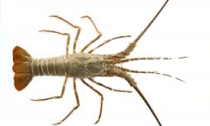
Lobsters, like shrimps and crabs, are decapods – literally meaning 10 legs – and can be found in all of the world’s tropical and sub-tropical seas as well as more temperate waters. They are predatory, nocturnal animals with a vividly decorated coat. They are often numerous locally; they linger in crevices (with their long antennae sticking out) during the day and hunt small benthic organisms at night, but they also feed on organic detritus whenever they happen across it. As with all crustaceans, the lobster moults or sheds its shell to grow.
Up until the end of the 19th century lobster was so plentiful that it was often used as fish bait. Sadly, with lobster’s ever-increasing popularity those days are now gone forever. Lobsters have recently suffered a dramatic demographic decline; intensive fishing has annihilated entire populations, especially where tourism abounds.
The lobster families that you may encounter are the spiny rock lobsters, Palinuridae, the slipper lobsters, Scyllaridae and the true reef lobsters,Nephropidae.
The true reef lobsters, Nephropidae, with their enlarged pincers on the first pair of legs are found in northern waters, and will not be seen here. The first pair of walking legs carries large but slightly unequal pincers that can be both formidable and dangerous.
The Palinurus genus (frequently transcribed as Panulirus) is represented by numerous species in all of the world’s tropical and sub-tropical seas as well as more temperate waters. It is a predatory, nocturnal animal with a vividly decorated coat.
Slipper lobsters, also knows as Spanish or shovelnose lobsters, live on stony ground, in caves, and can also be found on muddy bottoms. They use the large spade-like scales at the front of the head to burrow into mud, sand or gravel between and under stones. It lacks the large claws of a true lobster, or the long antennae of spiny lobster. Instead it sports very short antennae and two large hinged scales or plates at the front of the shell. The carapace has a rough consistency
Other decapods to be found in the region are the Species of Metanephrops, such as the China lobster (Metanephrops sinensis) and the Japanese lobster (Metanephrops japonicus). These small members of the class, commonly called scampi elsewhere, normally inhabit very deep waters with and often burrow into the sandy or muddy bottom. They range in size from 50 – 75mm. Please do not include any Metanephrops in your survey.
Unsurprisingly, low numbers are indicative of overfishing.








Social Profiles